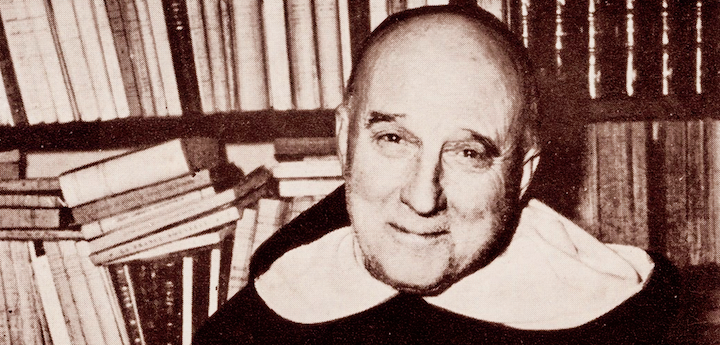The desire to be holy is natural to us. But the pursuit of holiness should be reasonable, compatible with human nature and open to the ineffable mysteries of God. Christianity extends over the entire history of the human race and in so doing not only reveals the eternal love of God but the dignity and the sanctification of history as well.
Our individual return to God must be understood within the context of the spiritual journey of the entire People of God in history. In our lonely spiritual battles, we participate in the same spiritual struggles of our forefathers, and we can look to their example for guidance.
The spiritual classic The Three Ages of the Interior Life by Father Reginald Garrigou-Lagrange, O.P. provides a roadmap for our struggle and quest, we enter into communion with Him.
The first age is the “Purgative Way,” where we in prayer identify our sins against God and repent of them. The second age is the “Illuminative Way,” when we contemplate God’s self-revelation and apply the truths of faith to ourselves. The third age is the “Unitive Way,” the pinnacle of holiness where we enter into communion with God.
But the Three Ages are not only stages of personal prayer. They describe distinct communal and historical dimensions. Examining the Three Ages, in outline form, can help us enter into the mystery of God’s revelation over the entire expanse of history.
The essential message of the Old Testament is the first tenet of the Decalogue: “You shall have no other gods before me.” (Ex. 20:3) In preparation for the Redeemer, it was necessary to purify the Chosen People of all false worship, setting them apart from every other nation. The history of the Old Testament is a history of God’s fidelity to His people, the worship of the One God, with repeated relapses into false worship. The preaching of John the Baptist sums up the essential “Purgative Way” of the Old Testament in a single sentence: “Repent, for the kingdom of heaven is at hand!” (Mt. 3:2, NAB)
In the “fullness of time,” Jesus Christ, the Second Person of the Blessed Trinity, is born into the world. He is God’s Word made flesh (John 1: 14) and “the image of the invisible God, the firstborn over all creation.” (Col. 1:15) For He is “the way and the truth and the life” and “no one comes to the Father” except through Him. (John 14:6) The Person and teachings of Christ represent the “Illuminative Way” in our return to God.
Jesus wants us to be holy, to be in communion with Him. “For this is why the Word became man, and the Son of God became the Son of man: so that man, by entering into communion with the Word and thus receiving divine sonship, might become a son of God.” (St. Irenaeus) “The only-begotten Son of God, wanting to make us sharers in his divinity, assumed our nature, so that he, made man, might make men gods.” (Saint Thomas Aquinas)

Holiness is our destiny ordained by God.
The Church is the Sacrament of Christ, and His instrument of this communion. On Pentecost – upon the Descent of the Holy Spirit – the Church was born. Through the Holy Spirit, Mary and the disciples are definitively incorporated into the Mystical Body of Christ. This mysterious communion is truly the “Unitive Way.” Through the Church and her Sacraments, we intimately encounter the risen Lord and deepen our communion with Him.
But the Three Ages apply not only to us individually and as a people in history; they can help us understand the purpose and structure of the Mass. Indeed, the Mass can be said to be a mysterious “microcosm” of all salvation history (although the Mass is really quite the opposite, ushering us into eternity!).
The Mass is not only the unbloody re-presentation of Cross and Resurrection; the entire history of salvation is re-presented with every liturgical event. Hence we can expect the liturgy to reflect the Three Ages: the Old Testament Purgative Way, illumination of the teachings of Christ, and ultimate union with Him through the Church.
The “Purgative Way” is in the Penitential Rite where we place ourselves in the presence of God, express sorrow and repent of our sins: “through my fault, through my fault, through my most grievous fault.”
We move directly to the Illuminative Way, the readings of the Liturgy of the Word, where God reveals Himself through Scriptures and where the priest explains and applies the Word of God to our lives, as we ponder His revelation.
The Liturgy of the Eucharist is indeed the “Unitive Way.” We stand at the foot of the Cross during the Consecration and conclude with our encounter with the Resurrected Christ in Holy Communion, the Real Presence of Jesus under the appearance of mere bread and wine.
The Three Ages encompass the entire history of man. And the sacred liturgy represents the Three Ages for our sanctification in communion with one another. Our quest for holiness, therefore, must include a love for Scriptures and the Sacraments – and a true love of the history of salvation represented at Mass. After all “with the Lord one day is like a thousand years and a thousand years like one day.” (2 Peter 3:8 NAB)
Even the distractions are part of the worship. There are countless precedents for every naughty kid and bad homily in the history of the People of God.
So for purposes of holiness, it’s worth paying close attention to every one of the words and actions of the Mass.














